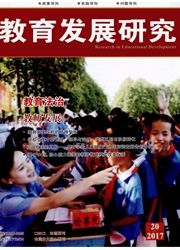

 中文摘要:
中文摘要:
区域经济的持续发展依托于生产要素的投入,作为优质劳动力的重要构成部分,高校毕业生的流动路径对引导区域人才政策具有重要意义。本文在识别高校毕业生的流动动机及决策路径后,建立了两区域两阶段决策的决策模型,并对两阶段进行了HULT分解,以分析不同阶段流动成本的差别对迁移路径选择的影响,通过抽样调查数据对我国高校毕业生流动的路径选择与区域经济水平的关系进行分析后,得出经济水平与高校毕业生得失比呈正相关、与高校毕业生流出距离成负相关、与流入距离呈正相关的结论后,建议落后地区以教育资源吸引滞留者,发达地区以就业资源吸引外来者。
 英文摘要:
英文摘要:
After identifying the motivations of graduates flow among three locations-residences, university locations and the first employment location-this paper developed a decision making model that contains two regions and two stages (HULT). Using data collected from the survey, we examined the relationship between flow pathways and regional economic development. The findings indicate that regional economic development is positively correlated to graduates net inflow ratio and inflow distant is negatively correlated to graduate outflow distant. Suggestions on regional talent policy are also offered in this paper: underdeveloped regions should develop education to hold talents, while developed regions should attract talents by improving employment environment.
 同期刊论文项目
同期刊论文项目
 同项目期刊论文
同项目期刊论文
 期刊信息
期刊信息
